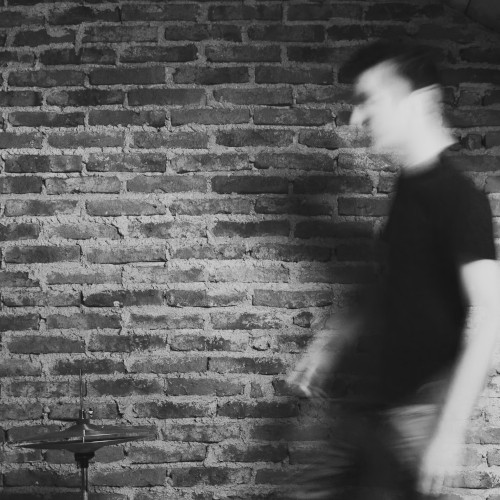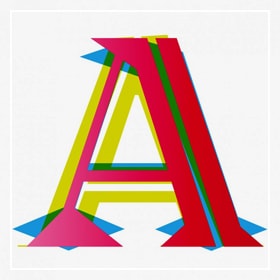It’s a cold early-winter morning in South Brooklyn. The streets are empty. My friend Gabe explains that it’s only a couple of days till Thanksgiving which means lots of people have left town, as we enter a huge warehouse space that has been converted into an art gallery. I have a flight later the same day, so there is only time for a quick look around. The video installation we are seeing is titled ‘The Mathematics of Consciousness’ by Charles Atlas. It consists of a number of rectangle-shaped projections on a massive wall at the back of the warehouse. Numbers appear in each of the little rectangles which I guess was to be expected in an exhibition about mathematics. Then suddenly the numbers change into abstract shapes and forms. The next sequence shows images of a scene of two women who walk around in an office, dancing, wearing old and large pieces of underwear. I lose focus, as I often do with this type of contemporary art where abstraction and confusion is part of the method. I simply don’t know what to make of it – but hey maybe that’s the point? I continue staring at the rectangles as my mind drifts to all the clothes I still have to wash, and the flights I still have to book. A sentence from the loudspeakers of the video installation brings me back to the gallery space: ‘Experience will be splintered into as many fragments as there are moments in life. Every act of memory is to some degree an act of imagination.’ There it is again, I silently say to myself – a thought that seems to follow me. Or am I just hyper-aware of it?
I’m sitting on a plane approaching Mexico City, with memories from the past 17 years running through my mind. I lived in Guatemala and Mexico for most of my 20s and early 30s. At many points, I decided that one of these two places was where I would spend the rest of my life, but each time things turned out differently – as they so often do. Now, I am back for a short visit to places where many experiences and encounters that shaped, shook and confounded me took place. The shape of Mexico City becomes visible from the window, and I remember seeing this enormous monster of a city from above for the first time when I was 18 years old. I remember saying goodbye to my first girlfriend at Benito Juarez airport before she flew back to Germany, which feels like a lifetime ago. I remember the emotion on the plane, anticipating being picked up at this airport by someone else in my mid-20s, and then flying here again randomly towards the end of the Covid lockdowns, just a couple of years ago. Today, I am back and about to see a childhood friend who happens to be in the city. In my imagination, these memories from almost two decades blend together – hearing, smelling and feeling this city brings me back to distant moments and merges what we, as anthropologists, might call temporalities.
What, if not the fact that we remember, combine and conflate information into the mix, mesh and mediation that we call memory.
I look around and see only passive faces. I can’t stop thinking that nobody else on this plane understands the emotional and cognitive process I am going through right now as I look out of the plane window. But what if they are all engaged in their own introspective processes? Perhaps they are anticipating a warm welcome from their families, a difficult conversation about their marriage, or like me, remember a time when they landed in Benito Juarez that shaped, shook or confounded them. Memory seems like an individual process; each of us sitting on isolated plane seats, in deep introspection, unable to read the emotions and feelings others attach to their own acts of remembrance. I recall reading somewhere that every cell in the human body would reproduced itself within a cycle of 7 years (but I’m a social anthropologist so don’t rely on me for scientific facts). The question then is: What actually connects us to the person we were seven years ago – the adolescent, the child or the baby we once were? What, if not the fact that we remember, combine and conflate information into the mix, mesh and mediation that we call memory. Stories we have heard about ourselves and others, visions and observations we believe we have experienced, and information we have taken from other sources like media, books or films, all of these fuse in the creative act of remembrance. The imagination, mediation and negotiation of our pasts (and futures) does not take place in some kind of void where we remember isolated scenes from our past. ‘A memory occurs to us because we are surrounded by other memories that link to it’ wrote Maurice Halbwachs almost a hundred years ago (1925). This is precisely the (very anthropological) point that runs through my mind as the plane touches down on the tarmac. Memory is a social act; introspective memory comes alive in the flux of human interaction, serving as an intersubjective ‘glue’ crucial in creating moral communities. In many communities, it is precisely stories of the past that shape our sense of belonging as well as our anticipations for the future.
I am sitting on a plane again, this time leaving Mexico on my way back home to London. As I scroll through the photos on my phone, I realise that this journey through my own past itself is already becoming a memory. I envision and anticipate how I will share the stories of my visit to Mexico with friends back home: Past, present and future always connected in the eternal flow of the social act we call memory.
References:
Halbwachs, Maurice. 1925 [1992]. On Collective Memory, Chicago (IL). The University of Chicago Press.
Featured image by Martin May on Unsplash.





